If you own a Fitbit tracker, the last few months have been … rough, to say the very least. Following Google’s acquisition of Fitbit in 2021, the platform has changed a lot. Unfortunately, many of those changes haven’t been positive ones.
Earlier this year, mass reports of Fitbit app crashes occurred three times over the span of just a month. Fitbit also recently ended support for older iPhones with iOS 14 or older and — perhaps more damning — killed off Fitbit’s most popular social features (including Challenges and Adventures). While Fitbit trackers still have a lot to offer, it’s understandable why some people may be looking at what alternatives are available. With features being repeatedly stripped away and app stability at an all-time low, now may be the time to get off the Fitbit ship.
If that’s where you currently find yourself, fret not. Here are a few of our favorite Fitbit alternatives that deliver robust health and fitness tracking without any of the Fitbit baggage.
Any modern Apple Watch
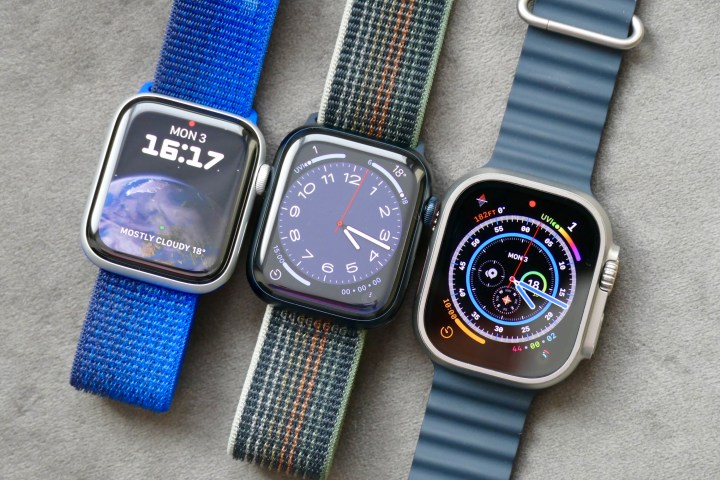
If you own an iPhone, one of your best bets for a Fitbit alternative is an Apple Watch. Although the Apple Watch is a full-fledged smartwatch rather than a dedicated fitness tracker like a Fitbit, it’s hard to argue against getting one.
When it comes to health and fitness features, any modern Apple Watch — including the Apple Watch Series 8, Apple Watch SE 2, and Apple Watch Ultra — will have you covered. All three watches support all-day activity and sleep tracking, heart rate monitoring with irregular rhythm notifications, and cycle tracking, and boast built-in GPS and water resistance. All of your activity is tracked via the Apple Fitness and Health apps using Apple’s iconic Rings system, which is one of the best in the business.
If you splurge for the Apple Watch Series 8 or Apple Watch Ultra, you can take your fitness tracking up a notch with ECG and SpO2 tracking. Both watches also come with a temperature sensor for monitoring your body’s temperature, which can be used for retrospective ovulation estimates if you track your cycle. You can also pay for Apple Fitness+ to access a variety of guided workouts (including outdoor runs and walks), though it’s not at all necessary to use the Apple Watch.
Apple’s nailed the health/fitness experience of the Apple Watch over the years, and that’s reflected in all three models. With excellent notification support, a robust library of smartwatch apps, hands-free Siri voice commands, Apple Pay, and a ton more, this is the go-to Fitbit alternative … so long as you have an iPhone to pair it with.
Samsung Galaxy Watch 5
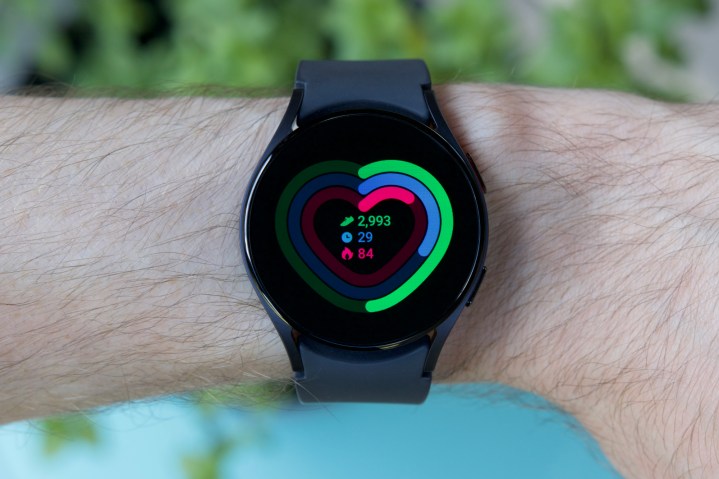
But what if you don’t have an iPhone? What if you’re like the millions of people with a Samsung phone instead? In that case, you’ll want to consider getting the Samsung Galaxy Watch 5. Like the Apple Watch, all of the usual fitness-tracking features are here — including activity and sleep tracking, heart rate monitoring, an ECG app to detect A-fib, and SpO2 tracking.
Something unique to the Galaxy Watch 5 is its body composition feature, which scans your body to analyze your fat mass, body fat percentage, skeletal muscle, body water, body mass index, and basal metabolic rate. It provides you with a wealth of data that no Apple Watch or Fitbit can match, and while it won’t always be 100% accurate, it’s a fantastic way to get a deeper look at how your body is functioning.
All of your health data is tracked in the Samsung Health app, which has easy-to-read breakdowns of your activity, recommended workout suggestions, social challenges you can compete with friends in, and more. Best of all? All of this is free and doesn’t require any sort of monthly subscription (take that, Fitbit Premium). The Galaxy Watch 5 technically works with any Android phone, but if you want access to all of its health features, you’ll want to make sure you’re using it specifically with a Samsung phone — like the Galaxy S23.
Garmin Forerunner 265
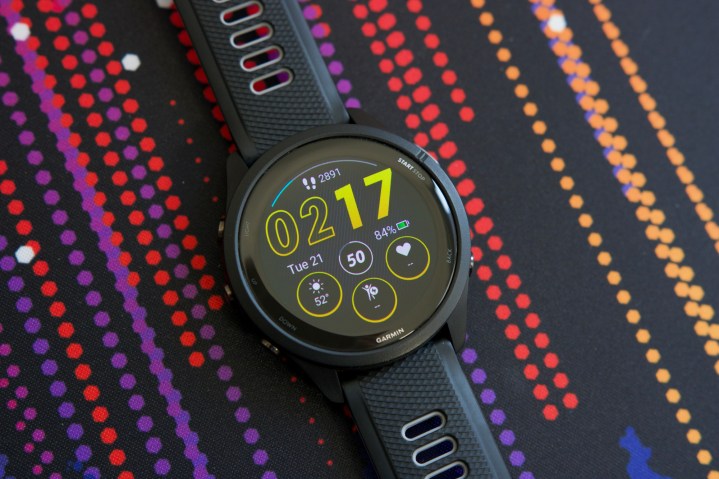
An Apple Watch or Galaxy Watch is a great choice if you want a powerful smartwatch with equally capable health features. But what if you don’t want an all-out smartwatch, and instead want something that’s a dedicated fitness tracker? For you, something like the Garmin Forerunner 265 is hard to beat.
The Forerunner 265 is marketed as a running watch, and as expected, it excels in this department. Thanks to daily recommended runs, multi-band GPS for unmatched accuracy, and free training programs to help you run a 5K or a marathon, the running experience is outstanding. But the Forerunner 265 goes beyond running with a suite of health tools that anyone — even non-runners — can seriously benefit from.
What kind of health features? The usual activity and sleep tracking tools are here, as is heart rate monitoring, and SpO2 tracking. But the Garmin doesn’t stop there. It also tracks your heart rate variability, respiration rate, and your body’s stress throughout the day. It then takes all of this data and uses it to calculate your Body Battery — an estimate of how much energy you’ve charged and drained so you can get an idea of how rested/fatigued you really are.
The Garmin Forerunner 265 doesn’t have much in the way of “smart” features, but it absolutely punches above its weight in terms of in-depth activity and health tracking. The Garmin Connect app has a load of social features, tons of challenges to complete, works with iOS and Android devices, and doesn’t require any sort of monthly fee. If that’s the type of Fitbit alternative you’re looking for, it doesn’t get much better than this.
Amazfit Band 7
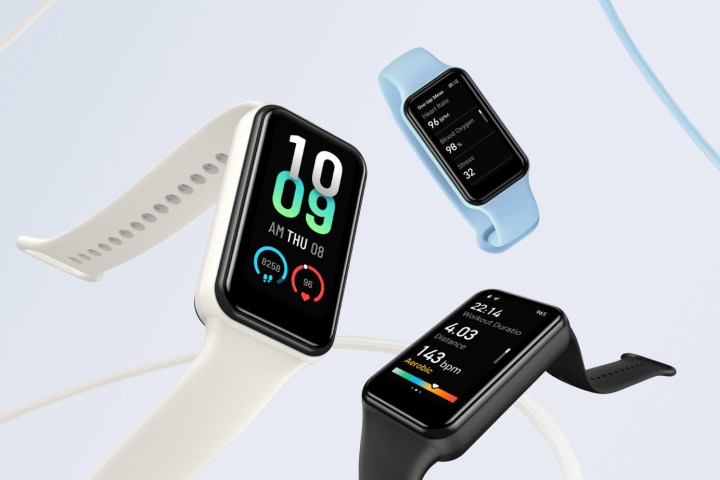
I personally love the Garmin Forerunner 265 — so much so that I think it’s one of the best fitness trackers (and best smartwatches) you can buy. But I also understand that its $450 asking price is way too expensive for some people. If you’re looking for a more budget-conscious Fitbit alternative, you should turn your attention toward the Amazfit Band 7.
Although we haven’t reviewed the Amazfit Band 7 here on Digital Trends, it’s pretty difficult to argue with how much the fitness tracker delivers for its $50 asking price. You’re getting 24/7 heart rate monitoring, sleep and activity tracking, SpO2 tracking, and stress level monitoring. You can also track your menstrual cycle, use a few basic apps to check the weather and set alarm clocks, and track more than 120 different workout types. Heck, you can even talk to Alexa for smart voice commands.
All of this is delivered on a compact wearable with a 1.47-inch AMOLED display, which is about the same size as a Fitbit Charge 5. Amazfit’s health platform isn’t the most robust out there, but with a low price of admission and no subscription fees to worry about, it’s a really impressive offering.
Oura Ring
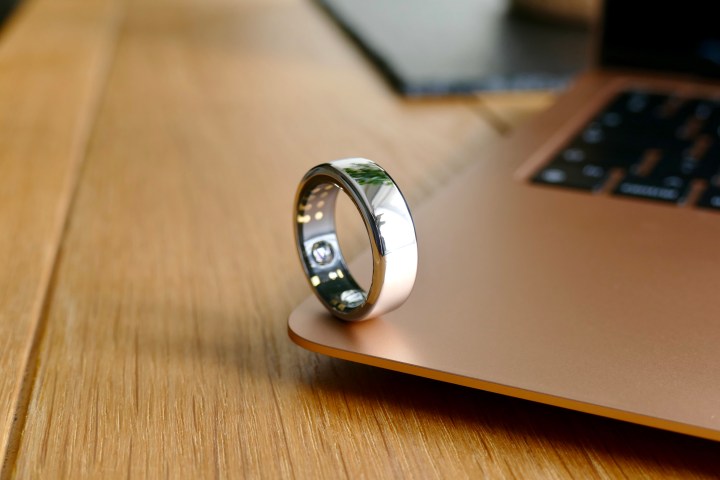
Last but not least, the Oura Ring deserves to be on your list of considerations for a good Fitbit alternative. The Oura Ring is unlike any of the other fitness trackers on this list in that it’s not a wearable you slap on your wrist. Instead, it’s a ring that you wear on your finger — just like a wedding band or any other ring. And although it may not look like much, the Oura Ring is still able to track all the health data you could want.
In-depth sleep tracking that’s simple to understand? Check. SpO2 monitoring to follow your blood oxygen levels? Yep. Heart rate and activity tracking to record your exercises throughout the day? You bet. In addition to this data being available on its own, it also all ties into your Oura Readiness Score. Similar to Garmin’s Body Battery, this accounts for 20 elements of your body — sleep, heart rate, temperature, and more — to give you a score summarizing how well-equipped you are for the coming day. Have a high Readiness Score? Try pushing it at the gym. Have a low Readiness Score? Take it easy and let your body rest.
Although there’s no display on the Oura Ring, all of your data is synced to the excellent Oura app on your smartphone, which is one of the best companion apps we’ve used for any smartwatch/fitness tracker. You do need to pay a $6-per-month membership in addition to the upfront cost of the Oura Ring, and while that’s not ideal, it is cheaper than the $10 per month Fitbit asks for Fitbit Premium.
Should you ditch your Fitbit?

As you can see, you have a wide and varied choice when it comes to Fitbit alternatives. And these are just five of the best ones! You could also consider the Amazon Halo View, Garmin Vivomove Trend, Whoop 4.0 — the list goes on. Simply put, there’s no shortage of other wearables to replace your Fitbit with.
But should you ditch your Fitbit and move over to something else?
That’s ultimately up to you to decide. If your Fitbit is doing everything you want it to and you’re pleased with the app experience, keep using it as is and go about your day. The Fitbit platform has seen better days, but even with Google’s questionable handling of it, there’s no reason to believe it’ll crash and burn in the immediate future.
However, if you aren’t happy with the changes Google is making — and you want a way out — you should know that you have many, many options.


